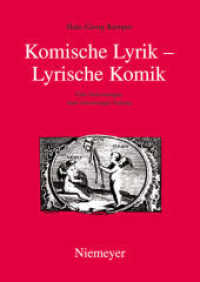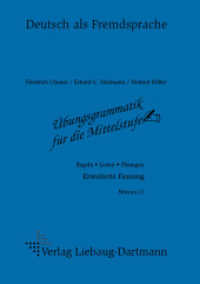- ホーム
- > 洋書
- > ドイツ書
- > Social Sciences, Jurisprudence & Economy
- > Education Science / Pedagogic
- > didactics, methodics, school education
Full Description
This book provides international perspectives on the use of digital technologies in primary, lower secondary and upper secondary school mathematics. It gathers contributions by the members of three topic study groups from the 13th International Congress on Mathematical Education and covers a range of themes that will appeal to researchers and practitioners alike. The chapters include studies on technologies such as virtual manipulatives, apps, custom-built assessment tools, dynamic geometry, computer algebra systems and communication tools.
Chiefly focusing on teaching and learning mathematics, the book also includes two chapters that address the evidence for technologies' effects on school mathematics. The diverse technologies considered provide a broad overview of the potential that digital solutions hold in connection with teaching and learning. The chapters provide both a snapshot of the status quo of technologies in school mathematics, and outline how they might impact school mathematics ten to twenty years from now.
Contents
Introduction.- Using video analysis to explain how virtual manipulative app alignment affects children's mathematics learning.- Applying the modification of attributes, affordances, abilities, and distance for learning framework to a child's multi-touch interactions with an idealized number line.- Using one-to-one mobile technology to support student discourse.- Duo of digital and material artefacts dedicated to the learning of geometry at primary school.- Using cluster analysis to enhance student learning when using geometry mathematics apps.- How children using counting strategies represent quantities on the virtual and physical 'twenty frame'.- Reshaping the learning experiences through apps: Affordances.- Empirical evidence for benefit? Reviewing quantitative research on the use of digital tools in mathematics education.- Digital tools in lower secondary school mathematics education. A review of qualitative research on mathematics learning of lower secondary school students.- Classical and digital technologies for the Pythagorean theorem.- Communication when learning and teaching mathematics with technology.- Online automated assessment and student learning: the Pépite project in elementary algebra.- Using dynamic CAS and geometry to enhance digital assessments.- Design of digital resources for promoting creative mathematical thinking.- Drawing in space: Doing mathematics with 3D pens.- Diagrams and tool use: Making a circle with Wiigraph.- A linguistic approach to written solutions in CAS-allowed exams.- Technological supports for mathematical thinking and learning: Co-action and designing to democratize access to powerful ideas..- Recursive exploration space for concepts in linear algebra.- Geogebra as a tool in modelling processes.- Instrumental genesis and proof: Understanding the use of computer algebra systems in proofs in textbooks.- In search of standards: Teaching mathematics in a technological environment.- Using graphic calculators to graph quadratics.- Teacher beliefs and practice when teaching with technology a latent profile analysis.- Uses of technology in K-12 mathematics education: concluding remarks.








